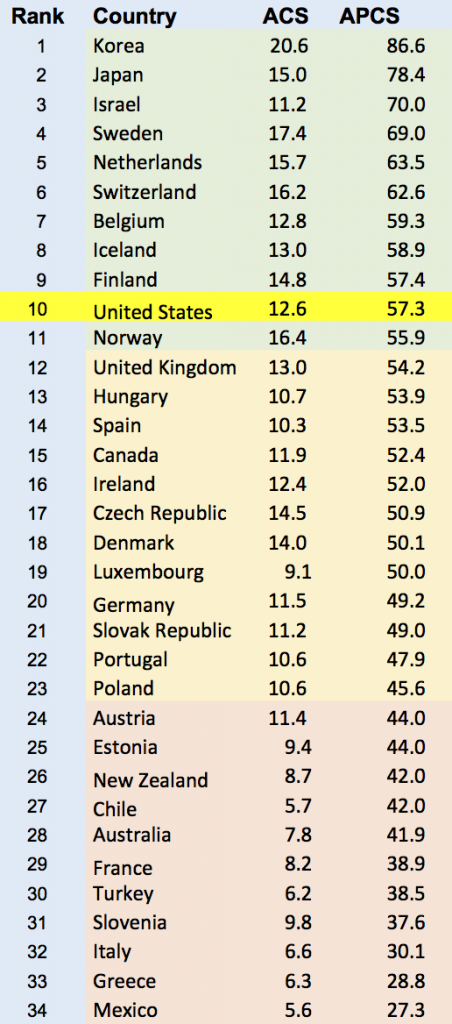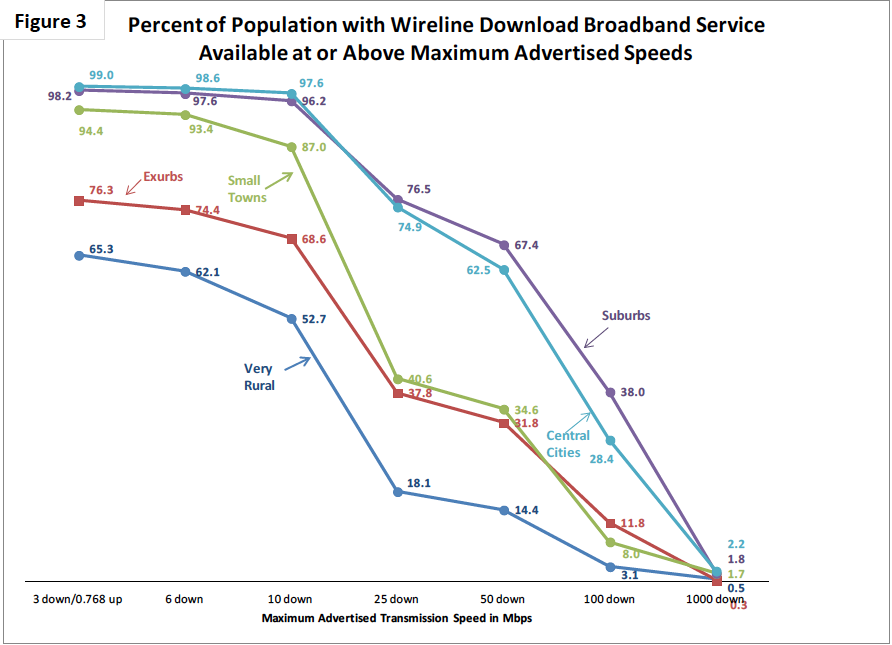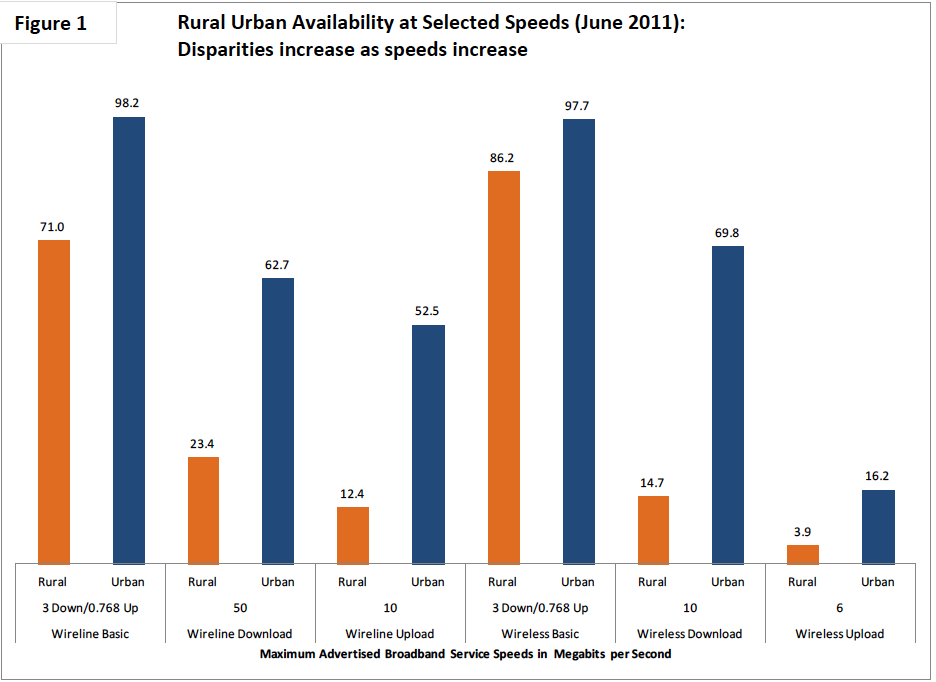Chairman Wheeler’s Broadband Draft Falls Short
FCC Chairman Wheeler has circulated a draft of the broadband progress report he wants to present to Congress pursuant to Section 706 of the Communications Act. The draft is certainly intriguing, especially as it follows on the Measuring Broadband America 2015 report we discussed last time. The MBA 2015 report said that US broadband speed had increased from 9 Mbps in the first quarter of 2011 to 32 Mbps in the third quarter of 2014, an improvement of 360 percent. That’s a pretty hefty gain for a 3 1/2 year period by any rational assessment.
Yet the chairman’s draft declares: “While the nation continues to make progress in broadband deployment, advanced telecommunications capability is not being deployed in a reasonable and timely fashion to all Americans.”
So how does the Chairman of the FCC justify this conclusion? With multiple bits of minutiae:
Factors leading to this conclusion are as follows:
- Approximately 34 million Americans still lack access to fixed broadband at the FCC’s benchmark speed of 25 Mbps for downloads, 3 Mbps for uploads
- A persistent urban-rural digital divide has left 39 percent of the rural population without access to fixed broadband
- By comparison, only 4 percent living in urban areas lack access
- 10 percent lack access nationwide o 41 percent of Tribal Lands residents lack access
- 41 percent of schools have not met the Commission’s short-term goal of 100 Mbps per 1,000 students/staff.
- These schools educate 47 percent of the nation’s students,
- Only 9 percent of schools have fiber connections capable of meeting the FCC’s long-term goal of 1 Gbps per 1,000 students.
- Internationally, the U.S. continues to lag behind a number of other developed nations, ranking 16th out of 34 countries.
Our International Standing is Better than Chairman Wheeler Says
So let’s look at the last claim first because it’s the most transparently faulty. The draft doesn’t have any citations, so there’s no source for the 16th place claim or the nature of the 34 countries. So I’m going to guess that Mr. Wheeler gets 16th place from the latest Akamai State of the Internet report, which lists the United States in 16th place in “average connection speed” among all nations and regions (close to 200.) As Akamai has explained, the “connection” measured by this yardstick is not the broadband network, it’s the multiple TCP “virtual connections” between web browsers and web servers. Because multiple “virtual connections” are active at the same time over a physical network, the individual virtual connections measured by Akamai don’t reflect the speed (or capacity, more exactly) of the broadband network. If you look at the following table you will see that the average connection speed (ACS) is typically about 22% of the average peak connection speed (APCS) which, according to Akamai, is most representative of the broadband network’s capacity: “Within the report, we note that we believe that the average peak connection speed is more representative of Internet connection capacity.”
So error number 1 is relying on Akamai’s ACS instead of APCS. That’s the “shooting from the hip” mistake of thinking the common usage of a technical term reflects its actual meaning.
The next error is claiming that the US ranks 16th out of the 34 developed nations; the chairman’s English isn’t very clear, but I think that’s what he’s trying to say. The OECD is the one and only organization or grouping that includes exactly 34 developed nations, so I’ll assume that’s what the chairman would have said if the draft were fully spelled out. When we populate a table of OECD members with the Akamai figures and sort it by APCS, the US ranks tenth, not 16th. Here’s the table.
Is it embarrassing that the US ranks number 10 in the OECD in Internet capacity? That’s your judgment to make, gentle reader, but it doesn’t seem all that disturbing to me given that the nine nations that rank higher don’t have a major footprint in the Internet application space. The only sizeable nation in that group is Japan, and the only nation that has any sort of an impact on the global Internet is Korea. Belgium is making a lot of headway in the transition to IPv6, but neither that nor the nations 5 Mbps broadband speed advantage seems to making a discernable difference.
Apparently the chairman believes tenth place in the OECD is good enough because he went out of his way to downgrade us to 16th. The sleight of hand to drop us from 10th to 16th is pretty interesting in its own right. Akamai ranks the US 13th in APCS because three of the top spots are held by non-OECD members: Singapore, Hong Kong, and Taiwan. Singapore doesn’t see any value in joining the OECD, perhaps because it’s developing quite nicely without OECD membership. Hong Kong can’t join because it’s not a country, and Taiwan is probably in the usual limbo because of China’s claim to its territory.
So the US is 13th in the overall Akamai ranking (or in 16th if we rank by ACS) but the slower OECD members are way down the Akamai list: Germany is 32nd, France is 52nd, Italy is 74th, and laggard Mexico is 88th. When we look at the population distribution of the leading countries the spread actually begins to look like we would expect it to look analytically: The highest broadband speeds are in nations where there is not a significantly large rural population, and where the rural population that does exist is not as broadly distributed as it is in the United States. Most of Sweden, for example, is an icy wasteland more like Alaska than New York; consequently, Swedes cluster in urban apartments in Stockholm and Malmö that are cheap to rewire.
So international broadband rankings are mainly determined by non-policy factors such as population spread. This point has been made over and over, but one has to be diligent to see the patterns. And yes, we can’t all be the Alabama football team every year.
Wheeler Confounds the Rural Problem with Bad Benchmarks
In addition to beating up the nation up for not ranking number one in the Akamai rankings, the chairman effectively makes the same point in different terms in connection with rural broadband: “A persistent urban-rural digital divide has left 39 percent of the rural population without access to fixed broadband.” Of course, rural areas are harder to serve than urban ones; that’s why the nations with highly urbanized populations rank higher than those with less urbanization, such as Mexico, Turkey, and Italy.
The question about rural broadband from the standpoint of broadband deployment in “a reasonable and timely fashion to all Americans” is whether we’re overcoming the enormous handicaps rural areas have in terms of capital, need, and return on investment in an expeditious manner; and if we’re not, we need to know why not and what we can do about it. It really doesn’t make sense to condemn the nation’s infrastructure across the board if we’re doing fine in cities and not doing fine in the countryside.
So the first thing to establish about rural broadband is the benchmark. Do we really need 25 Mbps APCS in each rural residence, or does some other figure make more sense? The FCC still defines broadband at 10 Mbps where rural subsidies are concerned, and that’s a meaningful standard. The MBA report shows that consumers don’t derive significant benefit from speeds higher than 15 Mbps for purposes other than video streaming for large families. For the most part, that’s entertainment and we don’t care that much about bridging an “entertainment gap.”
The NTIA figures show an enormous drop off in broadband availability when the bar is raised from 10 Mbps to 25. In 2011, very rural areas only had 18 percent availability for 25 Mbps downloads by wire, although 53 percent could get 10 Mbps service. So the effect of raising the bar from 10 to 25 Mbps is to convert a problem that can be solved by multiple technologies into a crisis of dire proportions. We can see this more clearly when we look at the NTIA figures for wired vs. wireless broadband at 10 Mbps.
Slightly more rural households can get wireless broadband at 10 Mbps than can get wired broadband at the same speed. So two changes need to be made in analysing rural broadband: the bar should be set at a reasonable level and we need to include all the technologies that can be used, not just the traditional ones.
There is still a problem with broadband availability in the “very rural” areas, but more up-t0-date figures are needed to assess it. It’s likely that some form of subsidy will be needed to complete the rollout to very rural areas, but that’s a longer discussion.
America’s Education Problem is not a Broadband Issue
Finally, the chairman’s argument that American schools don’t have adequate connectivity is simply bizarre because the US was the world leader in connected schools for a long time. I hope the FCC can offer some up-to-date figures on that issue as well, but I’m not impressed by the arbitrary 1 Gbps benchmark.
The first step in assessing the nation’s broadband progress is setting reasonable goals. Asserting that the US has to be the Ohio State Alabama football team of broadband is fanatical, not sensible. Asserting that broadband speed must be x Mbps without any justification is simply irresponsible. Pretending that the very rural areas absolutely must have the same broadband options as urban ones is simply not realistic, and focusing on school connection speeds rather than educational success is a misplaced priority.
All in all, we need a more sober assessment of our national broadband infrastructure.






